First Time for me posting here. Recently I decided to perform a recap on an 20 y/o old SMPS, which is used in a digital mixer. The recap went without any complications. I followed the guide I found here: Recapping DDX3126 PSU I also used genuine low ESR Panasonic capacitors, just as in the guide.
There are also schematics provided for the whole Mixer including the PSU-Schematics
Also here is the datasheet of the Regulator, so you wont have to search :D
But 1-2 seconds after powering it up for the first time after the recap, the first of the three SMPS regulators exploded (The SMPS has three separate regulators). I desoldered that broken SMPS regulator, and tried again. Then the same thing happened with the second SMPS regulator too. Curiously the third SMPS regulator survived at first without any problems. The output voltages from that one were completely fine too.
I ordered replacements for the broken regulators. Soldered them in, and tested with 80 VDC applied to the input, which is currently the only method available for me to perform measurements, without risking being electrocuted with rectified 230 VAC. It appeared to work completely fine with 80 VDC input, even after 20 minutes. Then I re-adjusted the output voltage, because the output voltages were little too high after the recap.
Then I reassembled the psu, checked for any shorted solder joints, and solder splatter. Spotting nothing unusual. And performed the first test with 230VAC and the freshly replaced Regulators. Seemed also to work fine. Reassembled the whole mixer again, and powered it up. The mixer booted fine, and worked for a couple minutes. Then after re powering it again, the third regulator exploded. It was the regulator I didn't need to replace yet. At that point I thought, that it might have to do something with the little bit dirty solder job, since these Regulators were already replace once, by the previous owner. So I replaced that one too.
Again reassembled the mixer, powered it on with 230 VAC, and after 15 minutes it exploded again. I also made sure, that the body of the regulator is not shorted to the heatsink, by using PET and non conductive thermal compound.
These are the results of my measurments: Vcc at pin #3 is well within specification
Components in the soft start circuit are OK.
Feedback optocoupler and circuit is also OK.
Measured the the drain (pin #1) during operation with oscilloscope in respect to GND (pin #2) with 100 V/div but I cant remember the timing (See figure below: Lower channel)
Top channel: Secondary side; Lower channel: Drain (pin #1)

Did anybody here have similar problems, or has some suggestions, on what to do? Because I unfortunately have no Idea, what causes this explosive failure :(
EDIT:
These are the defect "exploded" ICS. I measured each pins with the component tester. Result is, that there is no difference to the new working ICS. My assumption is, that since the "explosion" always took place around the screw-hole, but always in a different spot, that the thermal compound eventually broke down, and initiated an ark, which would just bridge out the MOSFET, thus creating a short circuit, where the regulator would switch with its 70 kHz. After thorough cleaning of the damaged ICs, I realized, that the dammage is only done on the heatsink, and does not even penetrate into the silicon.

